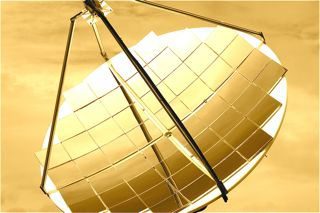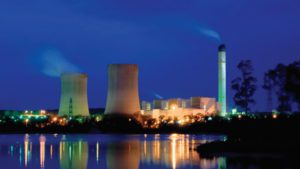Australian listed company Silex Systems has abandoned plans for a 100MW solar power station in Mildura, Victoria, after agreeing with the Australian Renewable Energy Agency to pull funds from the project.
The 100MW facility would have showcased the company’s unqiue concentrate solar power technology – knows as “dense array” dish technology.
 A 1.5 MW demonstration project has already been built at the site. However, the future of the project was in doubt when Silex in June said it would seek to sell or sell down its interests in its various solar interest, and instead concentrate on its laser uranium enrichment technology.
A 1.5 MW demonstration project has already been built at the site. However, the future of the project was in doubt when Silex in June said it would seek to sell or sell down its interests in its various solar interest, and instead concentrate on its laser uranium enrichment technology.
This is despite a decision by its major uranium technology partner, a GE-Hitachi joint venture – to put that project on ice as well. Its share price has plunged in recent months over concern about the future of its various technologies, and the future of ARENA. Its shares fell another 7 per cent to 78c on Monday.
Silex said in a statement on Monday that it and ARENA had “agreed to suspend” plans for the 100MW power station, and terminate the funding deed for $75 million of conditional support for the project from ARENA.
“The decision was based on a number of factors, including low wholesale electricity prices and the uncertainty surrounding the Renewable Energy Target,” the statement said.
Wholesale electricity prices are at record lows in Australia, due to reduced demand and excess capacity, and investments in large-scale renewable energy technologies are also at a halt due to uncertainty about the RET.
“Due to these circumstances, the $35 million in conditional funding from the Victorian Government under the Energy Technology Innovation Strategy Fund will also be terminated.”
Solar Systems, the solar subsidiary that Silex bought out of receivership several years ago, is currently “exploring alternatives” to further develop the Mildura site on a smaller scale.
ARENA CEO Ivor Frischknecht said ARENA “remains open” to considering any new or revised project opportunities that are ready for testing and demonstration.
Silex CEO and Managing Director Michael Goldsworthy said the company had captured “useful data” from its demonstration plant and is now investigating “alternative opportunities” to build on that work. But these are likely to be overseas.
“We believe that concentrated photovoltaic technology has a strong future in delivering clean, low-cost energy to supplement base load power in many suitable regions around the world,” he said. He has said in the past that the technology could deliver electricity at less than $100/MWh.
The company recently completed a 1MW demonstration plant in Saudi Arabia, and has long stated it was positive about the prospects of the technology in the Middle East and elsewhere.
“We continue to assess deployment of our unique ‘Dense Array’ dish technology in prospective offshore markets,” Goldsworthy said.
Still, it highlights the difficulties that new technologies have in developing large scale projects in Australia. The owners of another dish solar technology, went into receivership after the Solar Oasis project in Whyalla was pulled, and French nuclear giant Areva recently announced plans to dump another Australian-developed technology, the compact linear fresnel reflector installations developed by David Mills, although it will complete a 44MW solar “booster” plant at the Kogan Creek coal fired power station in Queensland.










